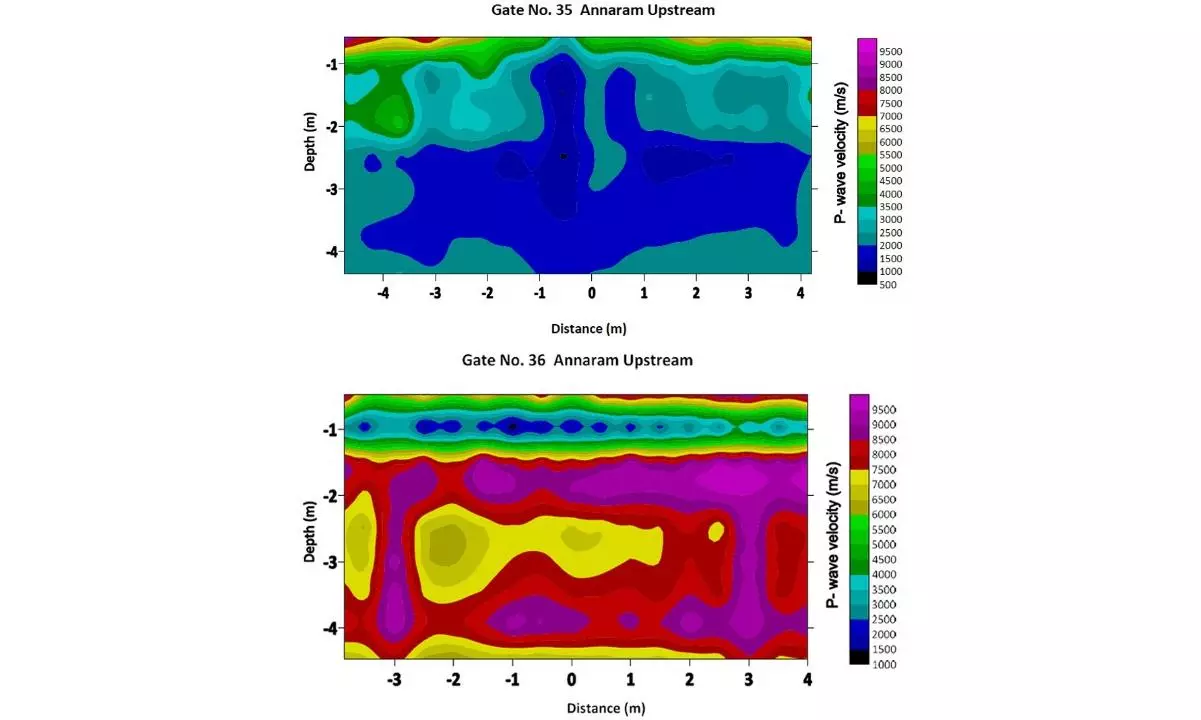Hammer Test Shows Annaram Weakness

Hyderabad: Fears of poor quality of construction of the Kaleshwaram lift irrigation scheme barrages appear to have found some conclusive evidence with the Central Power and Water Research Station (CPWRS), Pune, reporting that several of the secant piles laid for the Annaram barrage had been found to be of poor quality.
The geophysical studies of the barrages were mandated by the National Dam Safety Authority (NDSA) following the sinking of a portion of the Medigadda barrage, and serious leaks springing from under the Annaram and Sundilla barrages.
The CWPRS was tasked with conducting geophysical studies at Annaram, and Sundilla barrages, and its report about Annaram, submitted to the irrigation department on August 30, made it clear that in all 21 bays of the barrage and the secant piles it conducted the tests on, the quality of construction was poor – ranging from 10 per cent to a whopping 90 per cent.
In its 36-page interim report on parallel seismic test at Annaram barrage’, of which Deccan Chronicle has a copy, the CWPRS, a unit of the Union jal shakti ministry said: “significant low velocity of seismic waves” were found in all the 21 bays (secant piles) it conducted the seismic tests on to ascertain the construction quality of the secant piles.
According to experts in geophysical studies, and as per the IS Code, low velocity of seismic waves indicates poor quality of the construction.
The CWPRS said poor concrete quality was found in 21 of the 66 bays, or vents, of the barrage as per the study commissioned by the irrigation department following the NDSA recommendations.
Poor concrete quality
Degree – Gate
90% - 35
80% - 30
75% - 32
70% - 26, 29, 34, 42
60% - 27, 40, 44, 45, 46
50% - 31, 38
40 % - 33
35% - 43
30% - 39, 41
10% - 28, 36, 37
How the tests were done
Seismic waves were generated by hitting the raft surface with a hammer at one-metre intervals.
Hammering was done at a distance of 0.9 m from the raft edge in each bay/vent.
The compressional waves that travel down through the secant pile and sand and are recorded by the hydrophone receivers inside the borehole at one-metre intervals.
The generated waves travel downwards through the structure at a higher velocity until they encounter the sand where the velocity reduces drastically compared to concrete.

